Mars: Facts about the Red Planet, its moons, and possibilities for life
Discover interesting facts about Mars, its moons, its atmosphere, and the possibilities of life.
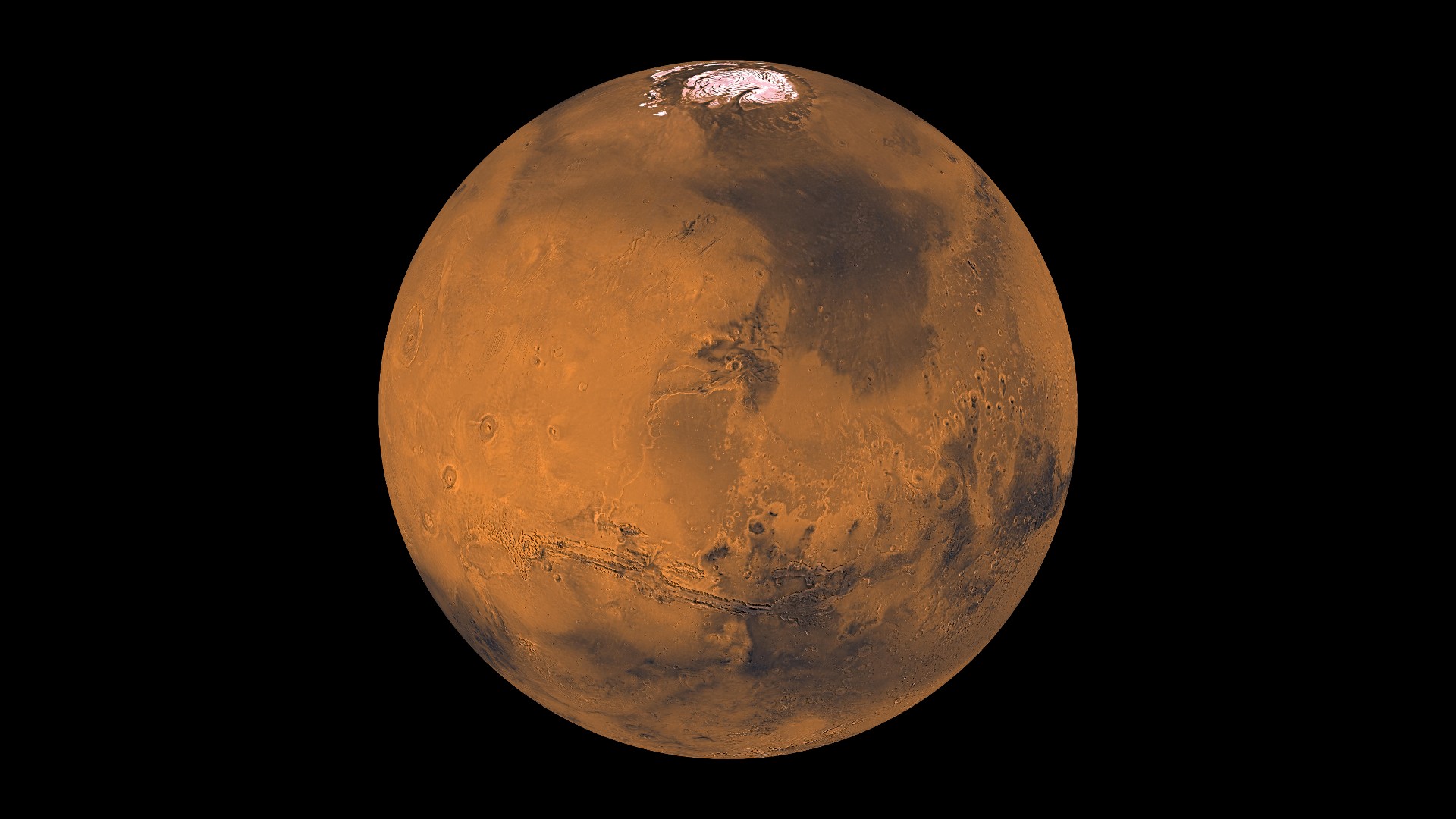
Where it is: 142 million miles (228 million kilometers) from the sun, on average
How big it is: 4,222 miles (6,795 km) wide, about half the diameter of Earth
How long a day lasts: 24.6 hours
How long a year lasts: 669.6 Martian days (sols), or 687 Earth days
Atmosphere: Extremely thin, about 95% carbon dioxide
Temperature: Minus 225 to 70 degrees Fahrenheit (minus 143 to 20 degrees Celsius)
Mars, the fourth planet from the sun, is a dry, rocky world. Its famous red color has earned it the nickname the Red Planet. Mars has fascinated people throughout history, and today, it is one of the most explored places in the solar system, with many rovers and orbiters searching the planet for evidence of past or present life.
Mars orbits at an average distance of 142 million miles (228 million km) from the sun. Its orbit is about 1.5 times the size of Earth's. Sunlight takes about 13 minutes to get to Mars, while it takes around 8 minutes to reach our planet.
Past missions from Earth to the Red Planet have taken anywhere from 128 to 333 days, depending on how far apart the planets were in their orbits at the time. While many robotic missions have visited Mars, no human has ever set foot there. Various missions by the world’s space agencies plan to change this in the coming decades.
5 fast facts about Mars
- The name Mars comes from the ancient Roman god of war. Romans could see the planet in the night sky, and its red color reminded them of blood, according to NASA.
- Mars is red because the dust that covers the planet's surface is full of iron oxides — in other words, rust.
- It's not just rusty, it's also dusty. Mars experiences planet-wide dust storms every few years, and enormous cyclones of dust called "dust devils" on Mars can tower more than a mile above the planet's surface.
- Mars is home to the tallest mountain in the solar system, Olympus Mons, which is like three Mount Everests stacked on top of each other.
- "Martians" (aliens from Mars) aren't real, but scientists used to think they were. Researchers once thought the dark spots they saw on Mars were canals that hinted that there could be advanced cities and intelligent life on Mars.
Everything you need to know about Mars
Is Mars bigger than Earth?
Mars is smaller than Earth. It has a diameter of roughly 4,222 miles (6,794 km) — about half Earth's diameter, according to the European Space Agency (ESA).
The Red Planet is rocky, much like Earth. The inside structure of Mars is also similar to Earth's, NASA rovers have revealed. Mars' outer crust is 6 to 30 miles (10 to 50 km) thick and is composed mainly of iron, magnesium, aluminum, calcium and potassium, according to NASA. Below that is a rocky mantle that's 770 to 1,170 miles (1,240 to 1,880 km) thick, which surrounds a dense core that's made of iron, nickel and sulfur and has a radius of 930 to 1,300 miles (1,500 to 2,100 km).
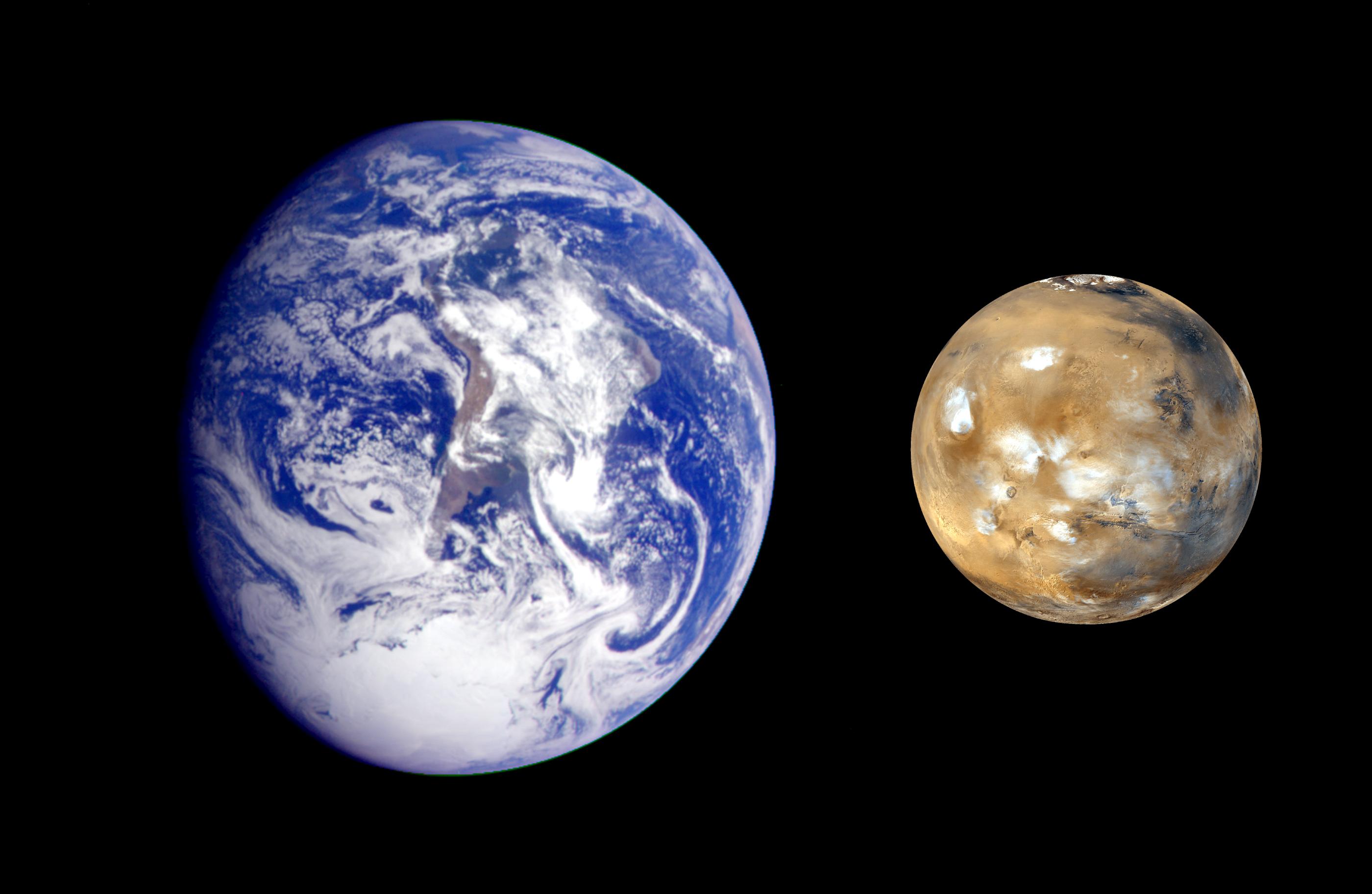
Does Mars have a moon?
Mars has two small, potato-shaped moons, called Phobos and Deimos. These moons are named for two sons of the Greek god of war, Ares, which the Romans called Mars. The names Phobos and Deimos mean "fear" and "panic."
The innermost moon, Phobos, has lots of craters and is roughly 13.8 miles (22.2 km) in diameter. In about 50 million years, it is expected to break up or crash into Mars.
Deimos orbits 2.5 times farther from Mars than Phobos does and is half the size — about 7.8 miles (12.6 km) across. Both moons are made mostly from rock and iron and may have once been asteroids that got captured by Mars' gravitational pull.
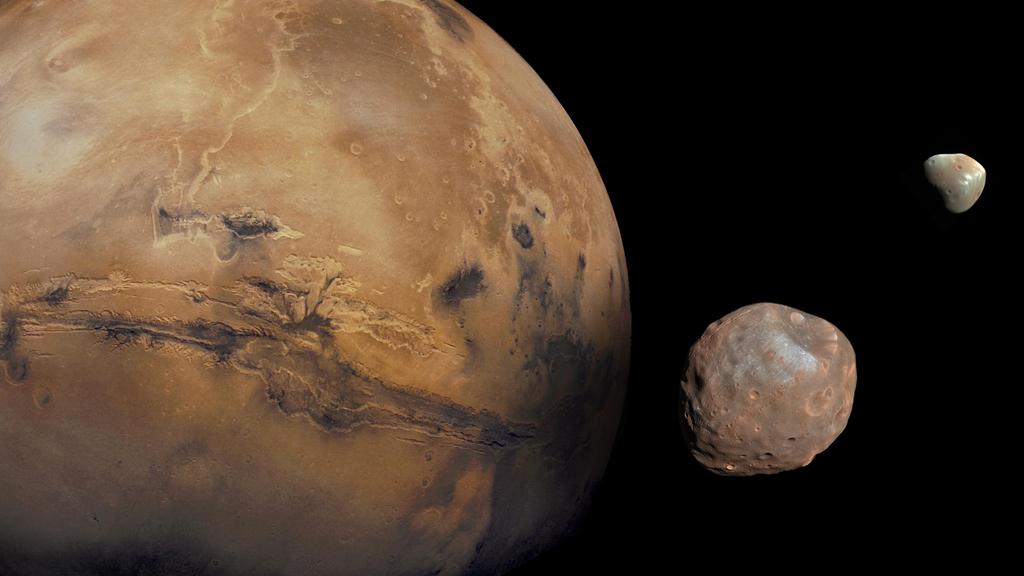
Is there life on Mars?
NASA scientists think life may have once been plentiful on Mars, as there is a lot of evidence that the planet used to be much warmer and wetter billions of years ago. Whether there is anything alive today on Mars is not known.
However, scientists can make some educated guesses about the kind of life that might be there or might have lived there in the past. If there is life on Mars today, it is probably microscopic — teeny-tiny organisms living beneath the Martian soil.
NASA's Perseverance rover has spent years drilling into Martian rocks to collect samples, in hopes that scientists can one day test them for signs of life. Scientists are working on plans to bring those samples back to Earth.
Is there water on Mars?
Although Mars is a dry planet today, lots of evidence suggests there were once oceans and rivers all over Mars. Lines carved into rocks show where water once flowed, and there may have even been sandy beaches like we have on Earth today. However, sometime in the past 2 billion years or so, Mars' water dried up.
Some satellites have found signs of water in the form of frost at the top of Mars' tallest volcanoes and in buried frozen lakes deep below the planet's surface. But for now, no liquid water has been spotted on the Red Planet.
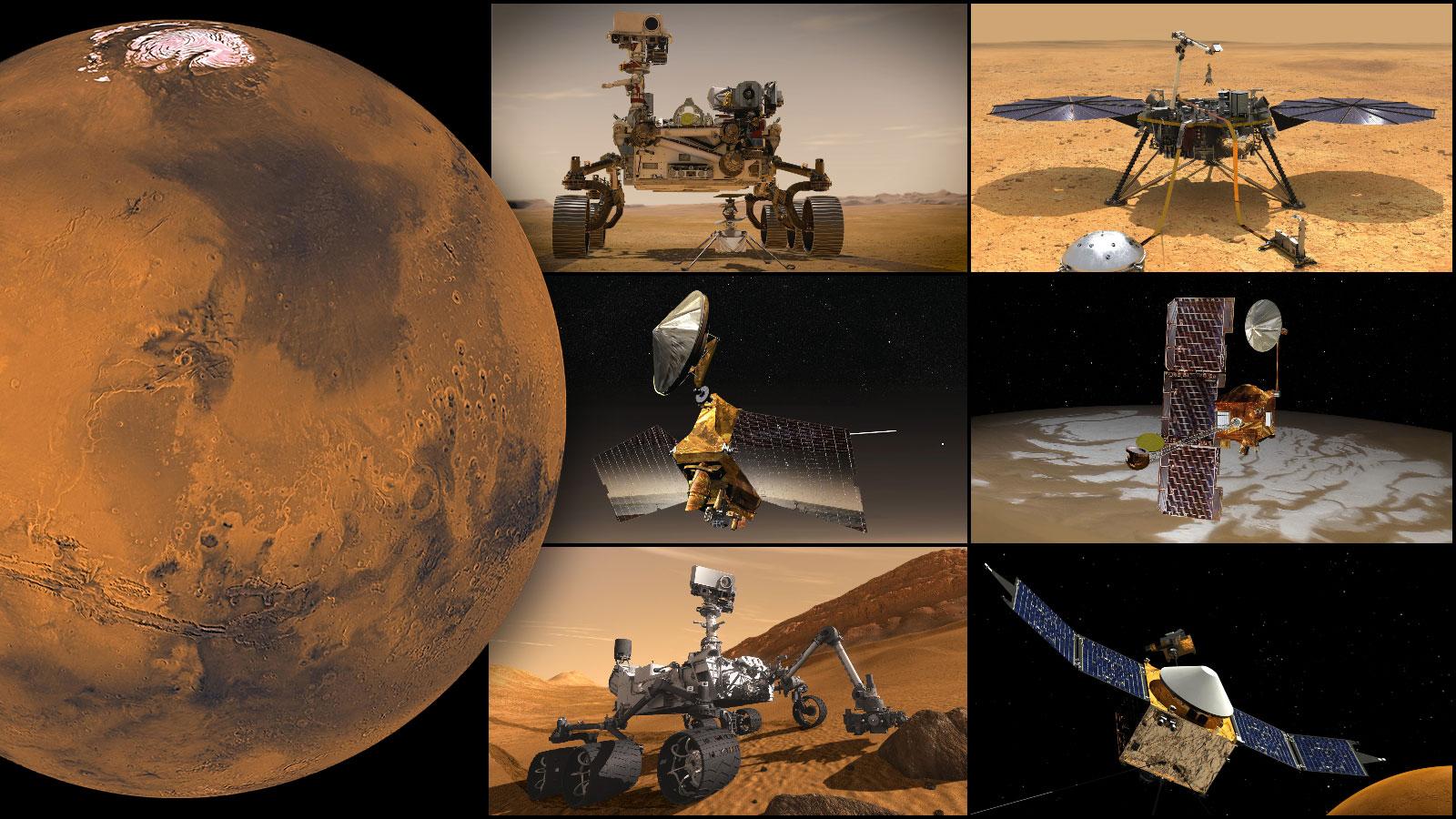
Have humans explored Mars?
Humans have never been to Mars, but we've been studying it for hundreds of years — starting with British astronomer William Herschel, who watched the Red Planet through an early telescope in the late 1700s.
The first spacecraft to successfully reach Mars was NASA's Mariner 4 probe, in July 1965. Flying without any humans aboard, the probe soared past Mars and sent back photos of the planet's surface, according to NASA.
In 1971, NASA's Mariner 9 became the first mission to successfully orbit Mars. The Viking 1 and 2 landers were the first human-made objects to make it to the Red Planet's surface and survive for more than a few minutes, when they touched down in 1976, according to The Planetary Society. From the surface, they took photos and conducted the first search for life on the planet.
The current group of robots on Mars includes NASA's Curiosity and Perseverance rovers, both of which have made incredible scientific discoveries. Perseverance carried Ingenuity, the first helicopter to fly on Mars, which took many incredible images before several of its rotor blades broke during a rough landing in 2024. China's Zhurong rover successfully landed on Mars in 2021, and it has sent back beautiful pictures, and even sounds from the surface.
Many other missions, both past and present, have revealed amazing insights about the planet's history, and future planned missions should help continue this progress. NASA aims to send humans to explore the Red Planet in the 2030s, though there is no specific plan to do so yet.
Mars pictures
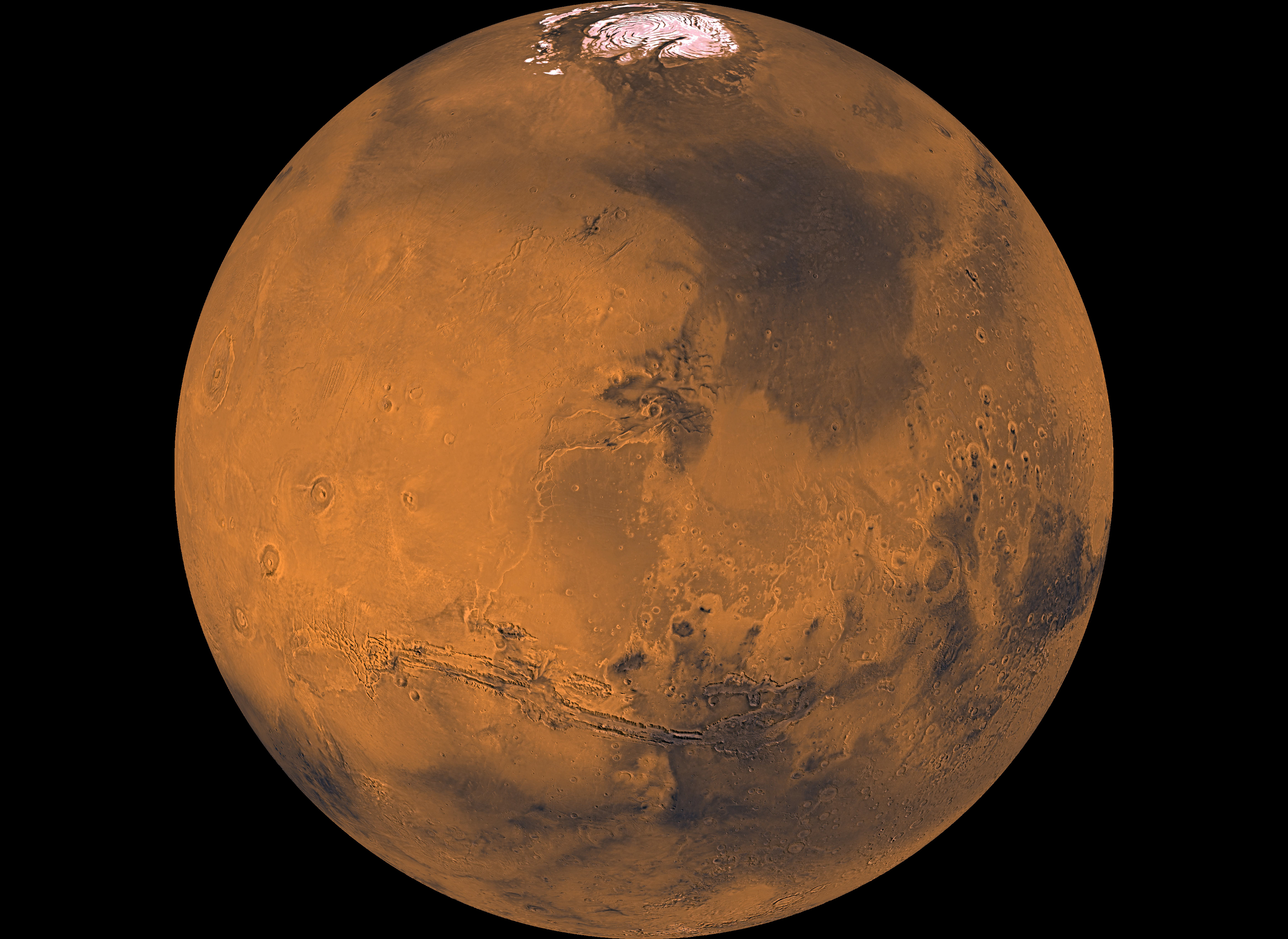
Mars from space
A global view of Mars from orbit, showing one of the planet's frosty polar ice caps on top.
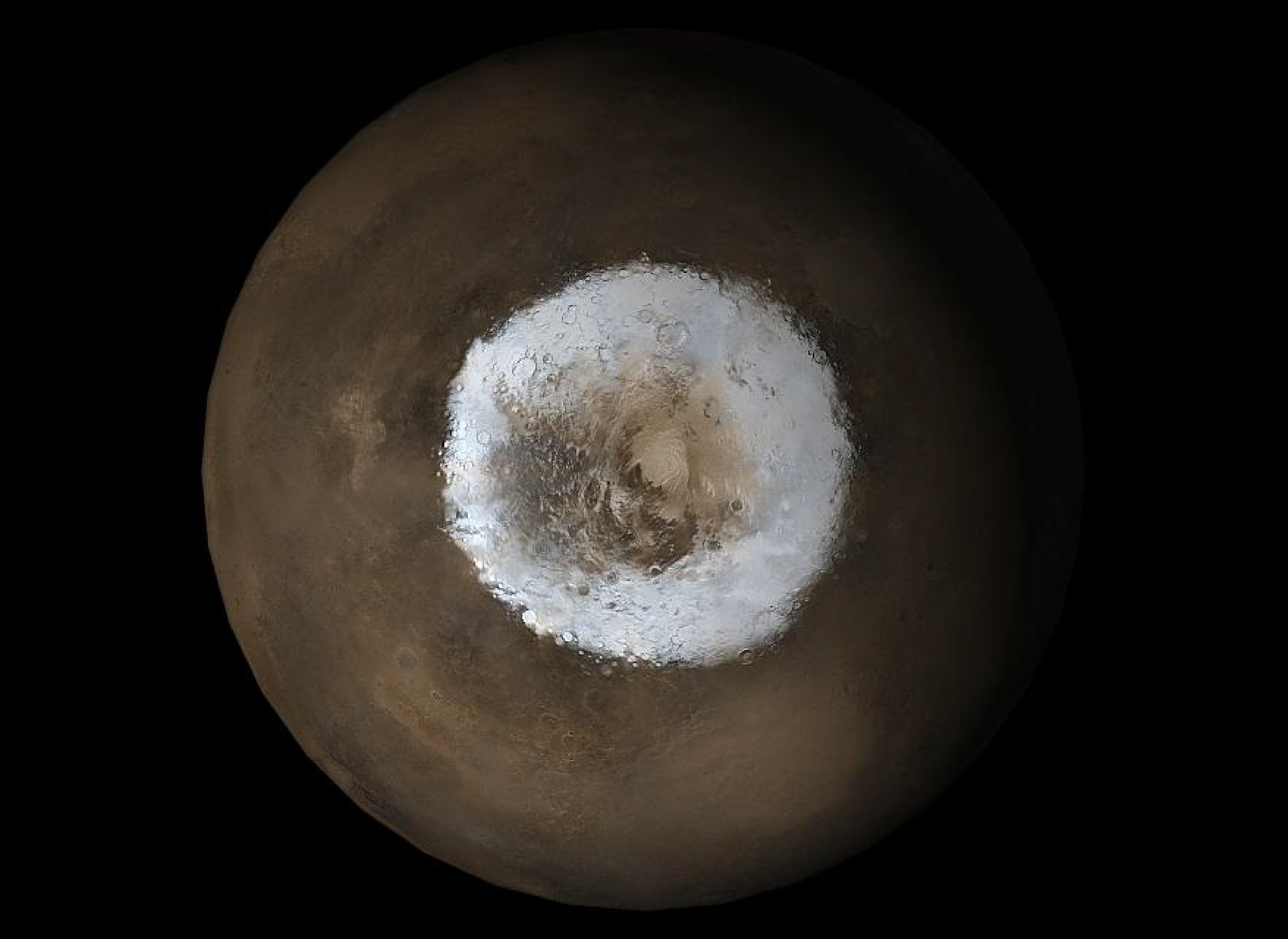
Snow on Mars
A close-up of one of Mars' polar ice caps, covered in white frost.
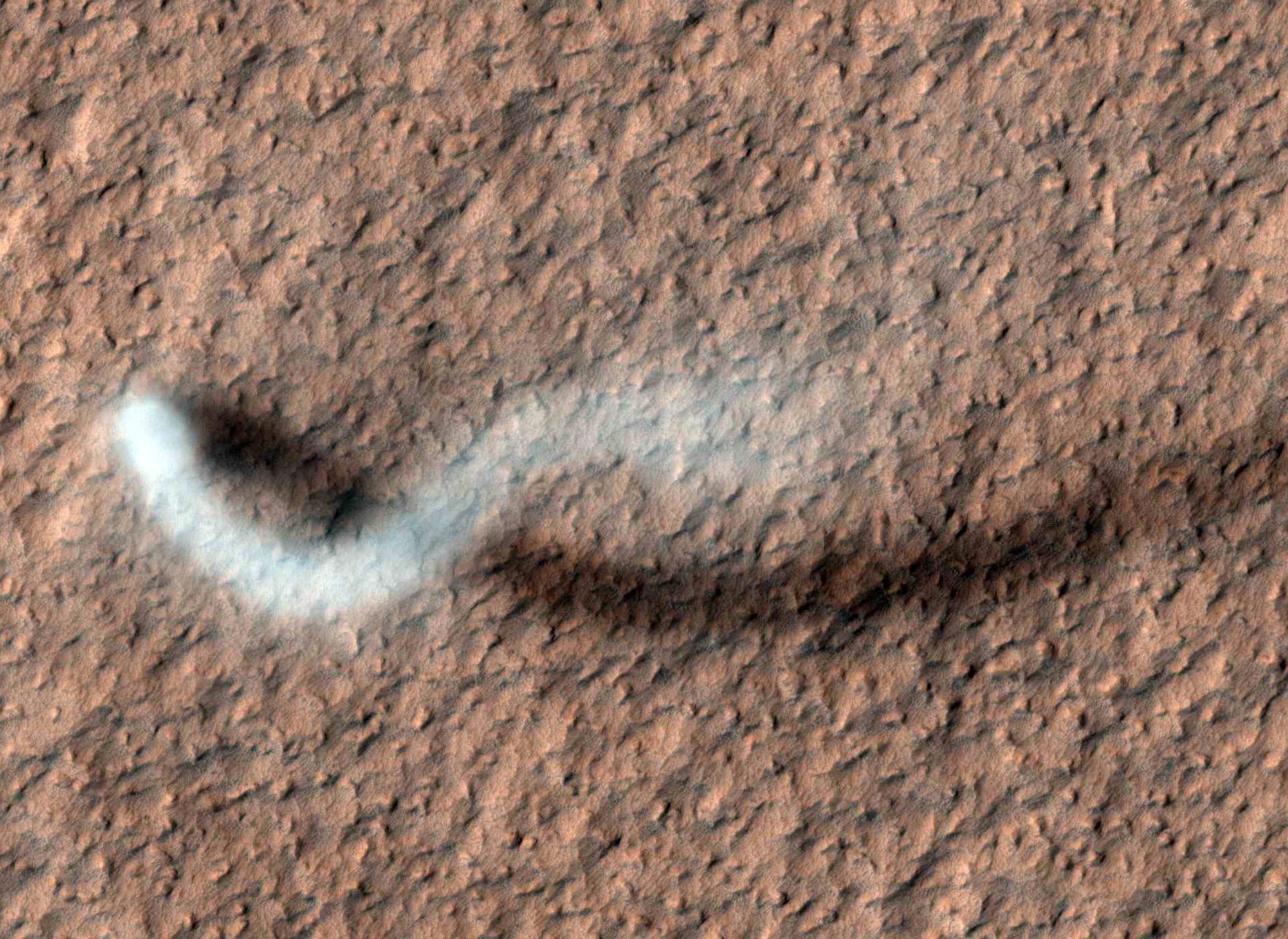
A Martian dust devil
A satellite image of a dust devil raging across the surface of Mars. These cyclones of dust can tower a mile high and are visible from orbit.
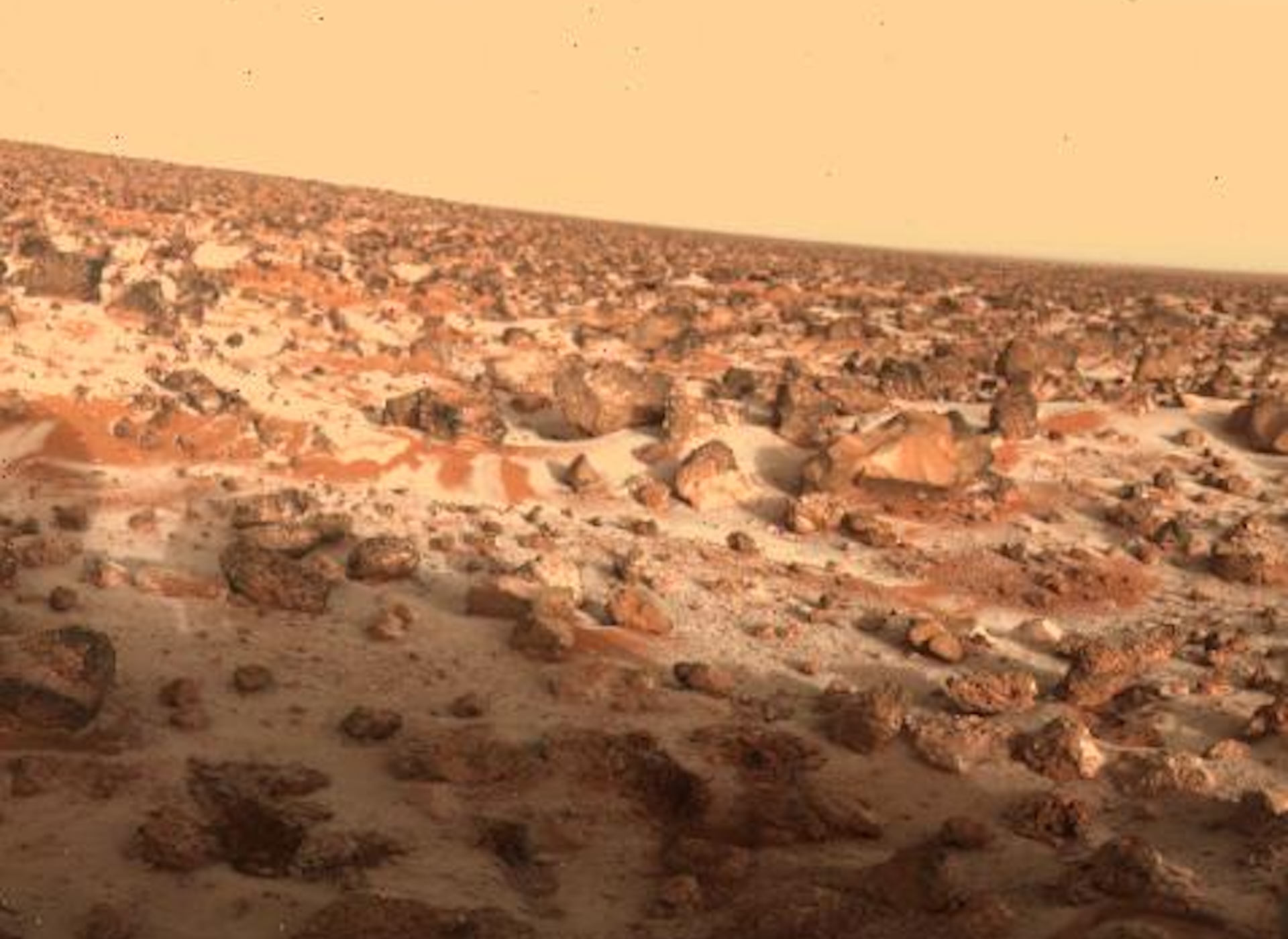
The surface of Mars
The rocky, dusty surface of Mars photographed by NASA's Viking lander.
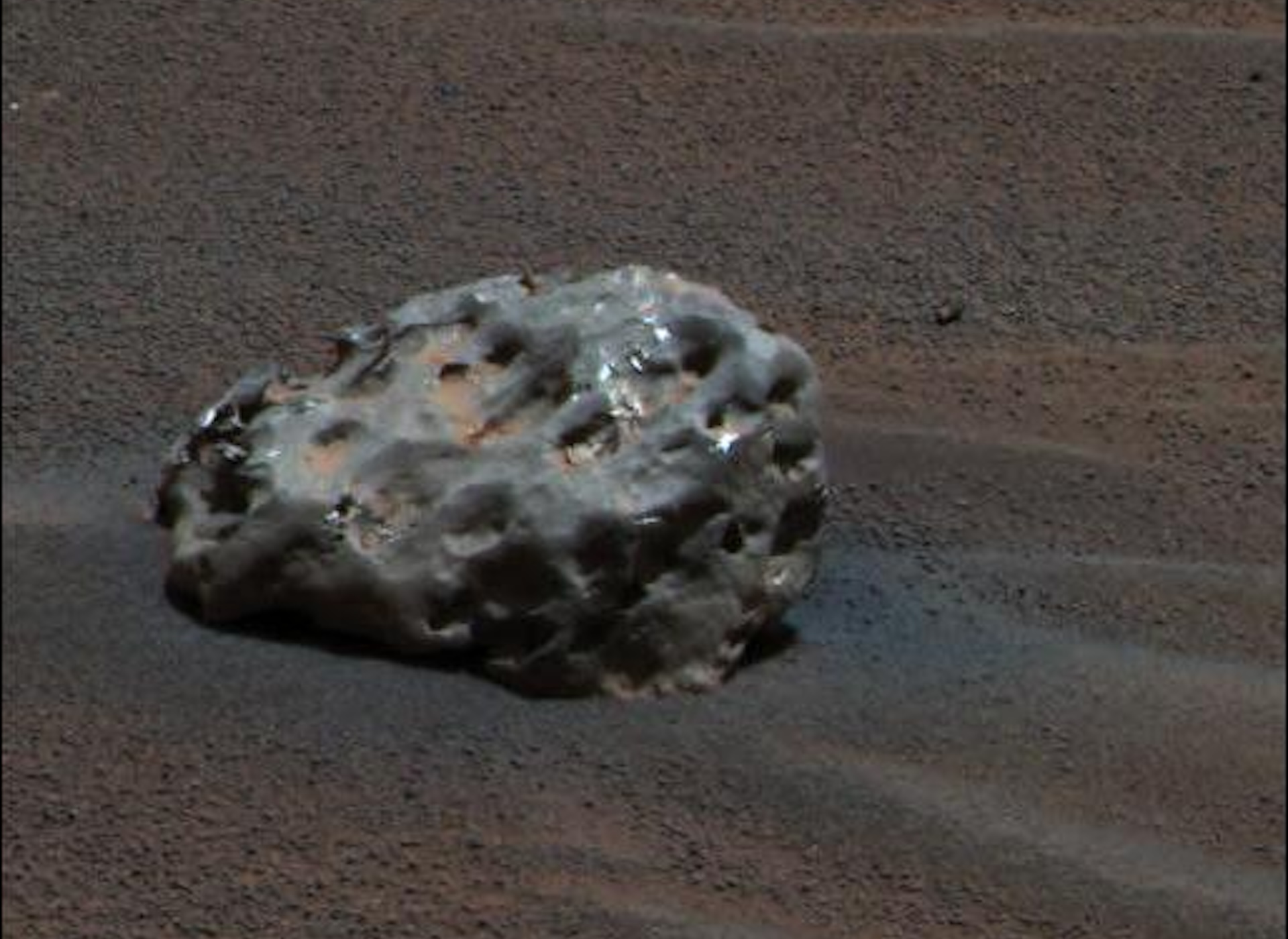
Meteor on Mars
A NASA rover snapped this photograph of an iron meteorite sitting on the Martian surface.
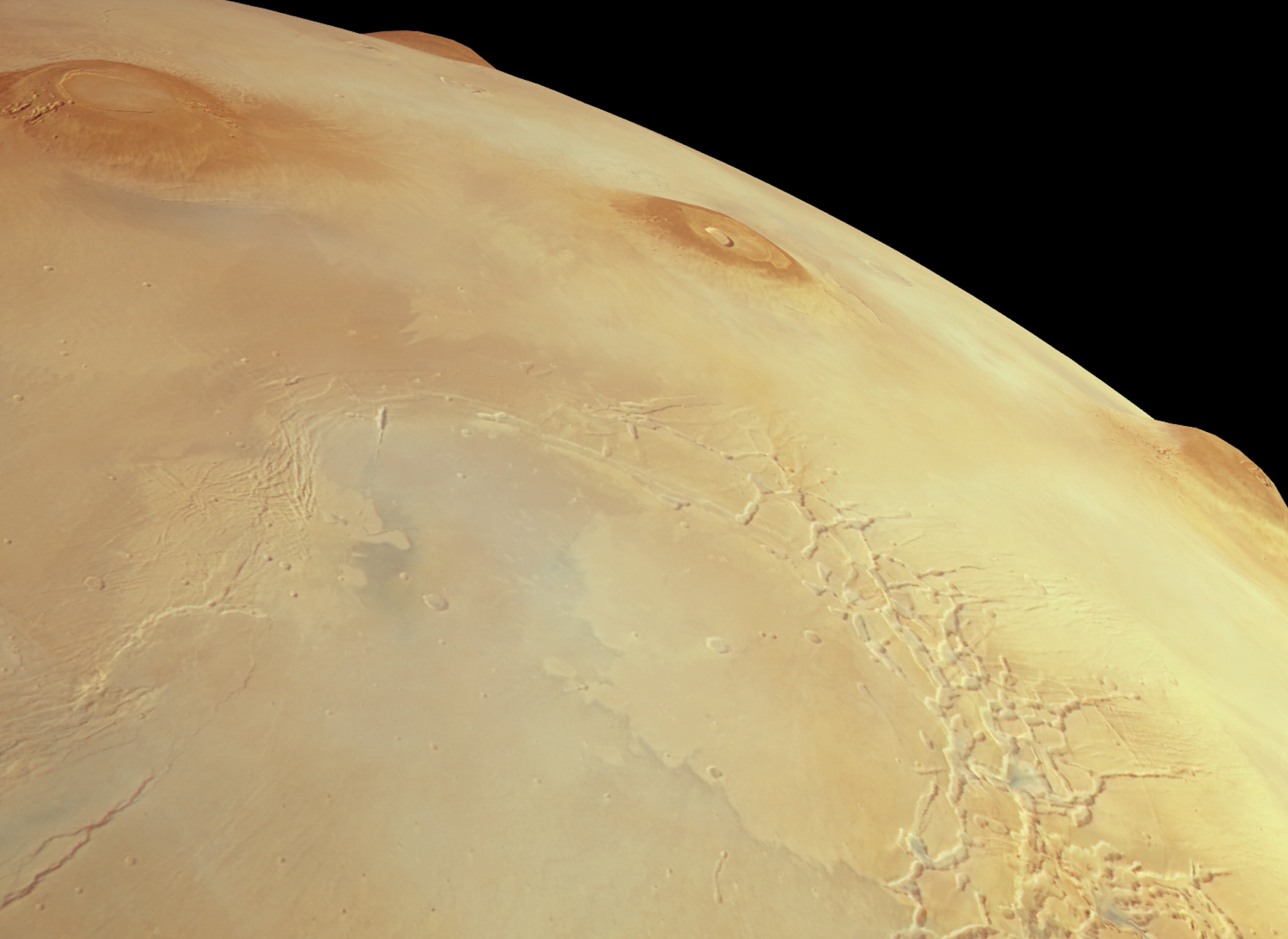
Martian volcanoes, and the tallest mountain ever known
Four Martian volcanoes seen by the European Space Agency's Mars Express orbiter. The top volcano is Olympus Mons, the tallest mountain in the solar system.
Discover more about Mars
- See how NASA is currently exploring Mars, as well as the agency's plans for Mars exploration, on this website dedicated to Martian probes.
- Dive into this stunning map of different regions on the Red Planet, courtesy of the U.S. Geological Survey.
- Browse even more amazing images from NASA's Mars missions on the agency's multimedia page.
Sign up for the Live Science daily newsletter now
Get the world’s most fascinating discoveries delivered straight to your inbox.

Adam Mann is a freelance journalist with over a decade of experience, specializing in astronomy and physics stories. He has a bachelor's degree in astrophysics from UC Berkeley. His work has appeared in the New Yorker, New York Times, National Geographic, Wall Street Journal, Wired, Nature, Science, and many other places. He lives in Oakland, California, where he enjoys riding his bike.
You must confirm your public display name before commenting
Please logout and then login again, you will then be prompted to enter your display name.










